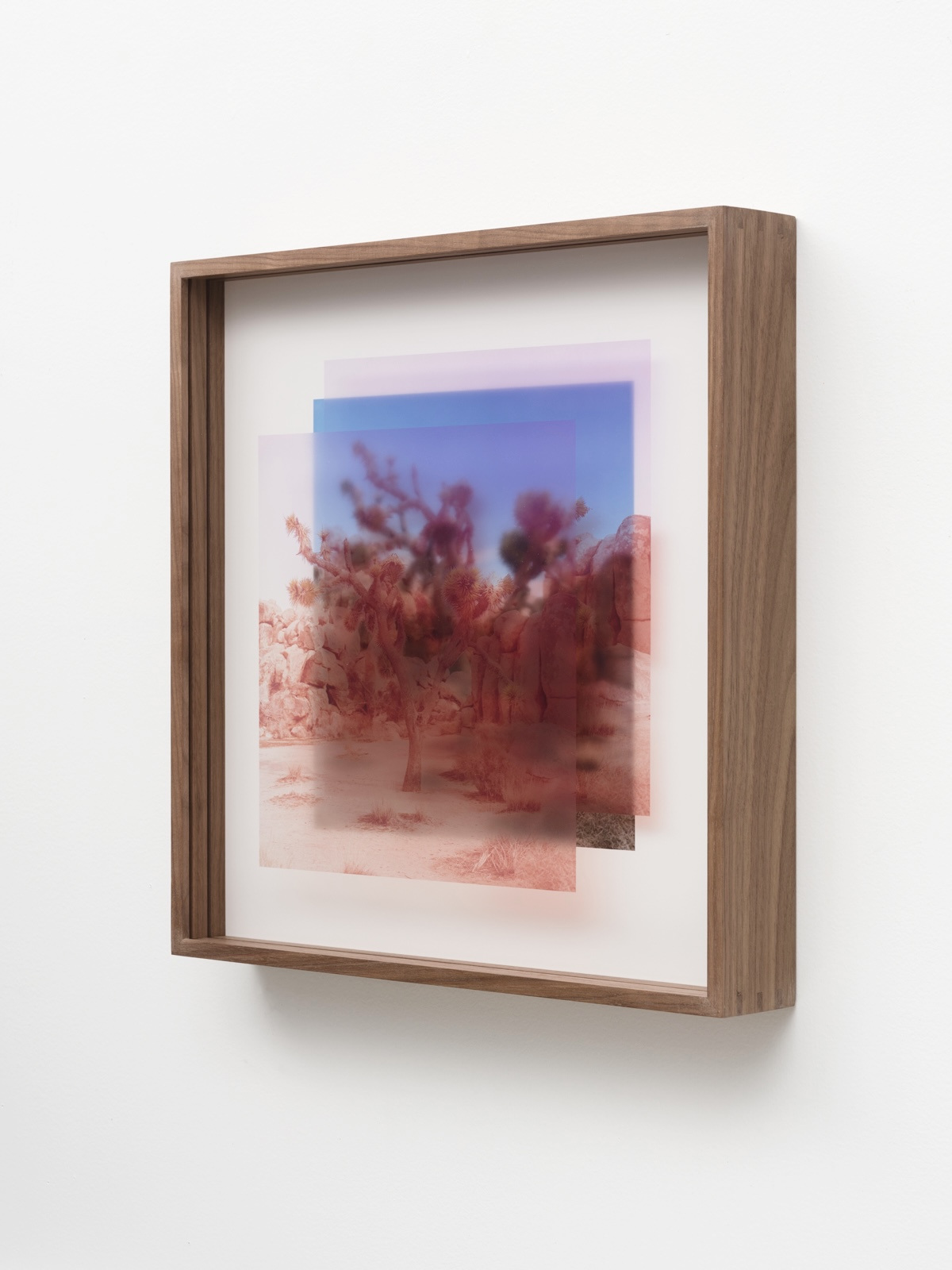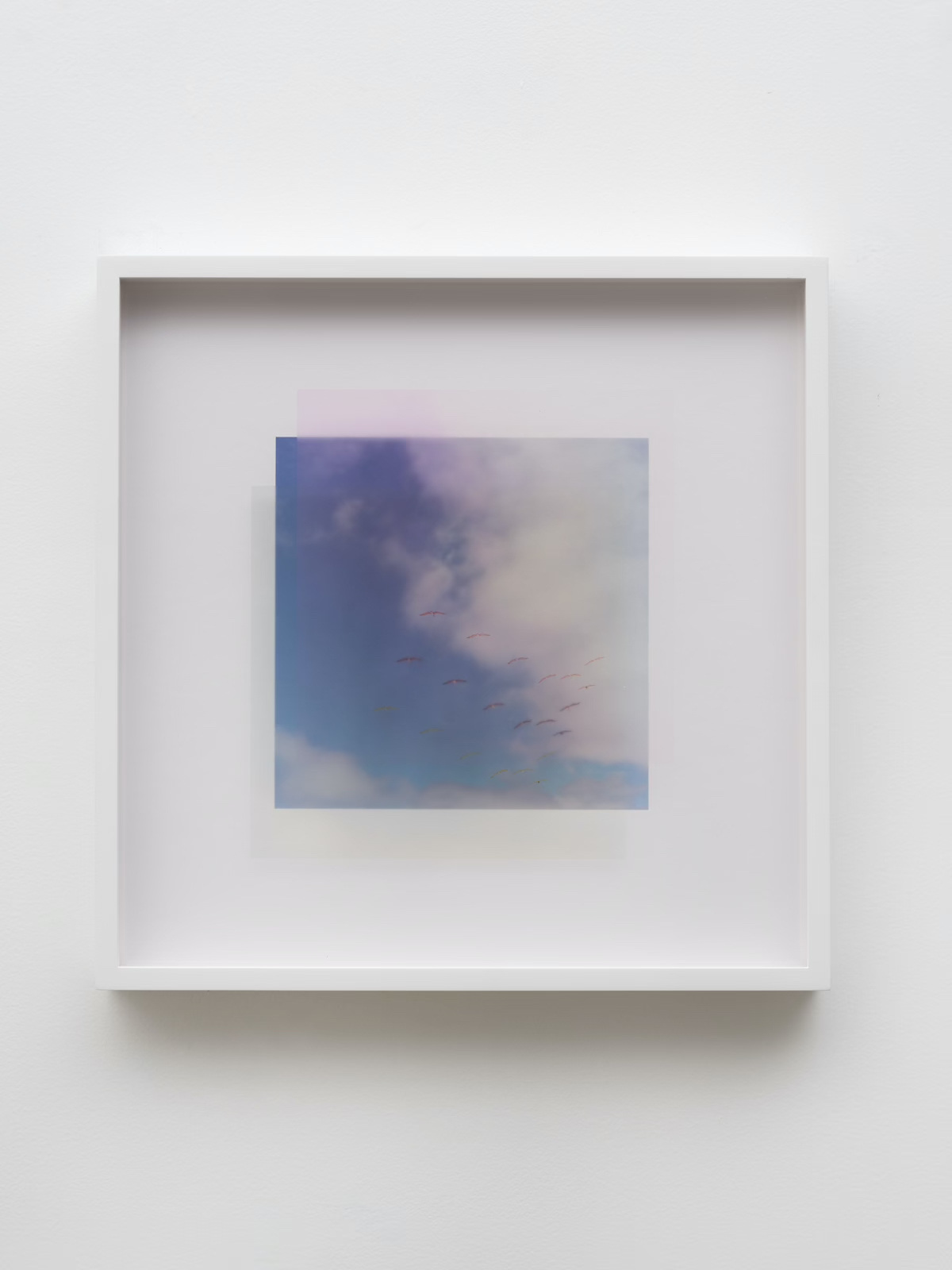Katie Shapiro: The Shadow
Over the past few years, I have been observing how artists expand the viewing experience by incorporating framing materials into the final product. Artist Barbara Weissberger expands her works onto the frames, Christopher Russell uses sprays of paint on the plexiglass to replicate splashes of water, and Ryan Adrick’s stips of obscured plexiglass that intentionally obscuring the details.
Katie Shapiro has a new body of work, The Shadow, that layers images “offset from each other on Plexiglass over inkjet prints to represent the idea of a shadow self, an idea that Jung theorized.” By creating work that has a physical distance from each later, therefore producing not only a shadow, but a doubling, the viewer is challenged with choosing a layer to make the experience whole.
Katie Shapiro (1983) received an MFA from the University of California, Irvine and a BFA in Photography from CalArts. Her practice is centered on the ineffable, and visualizing things that cannot be seen. Her work has been exhibited internationally, including at Kopeikin Gallery, Klompching Gallery, The Armory Center, Pasadena, Christopher Grimes, Santa Monica, Joan, Los Angeles and Aperture Gallery, New York. Her work has received coverage in Artforum, the Los Angeles Times, and New York Magazine and is housed in private collections as well as in the permanent collections at the Huntington Library, the California Museum of Photography at Riverside and the Amon Carter Library. She’s been an artist in residence at the Banff Centre in Canada and at Bullseye Glass in Pasadena. Shapiro lives and works in Los Angeles.
instagram: https://www.instagram.com/katieshapirostudio/
The Shadow
I was trained in a traditional photographic practice, but as I’ve gotten closer to understanding myself as an artist and what I am trying to express, I’ve found that I have wanted to incorporate sculptural elements in my work to include physical layers such as glass or photographic gels. This changes the experience of viewing a photographic image to get closer at what I’m interested in, which is a feeling that taps into the viewer’s unconscious, or that unknown feeling that lies beneath the surface of our understanding.
For years my project’s concepts spoke through the metaphor of landscape photographs of places where energy can’t be seen, such as vortexes and sacred spiritual locations. As I’ve continued to work through my practice, and especially after having two children and transforming into a mother, I’ve been working through my own life’s traumas and have realized that the root of my interest is still in the invisible. Specifically, I am interested in the invisibility of the subconscious and in ideas around psychology—particularly Carl Jung’s philosophies. This opening in my practice has led me to my current work around the Jungian idea of “the Shadow.”
In this body of work, I layer images offset from each other on Plexiglass over inkjet prints to represent the idea of a shadow self, an idea that Jung theorized. In my work the layering of Plexiglas over inkjet prints creates a slight physical and visual distance between images, representing the shadow or hidden part of oneself. Not only does the distance create an actual shadow, it is a literal repetition of the original image, suggesting the layering and complicated makeup of ourselves.
Posts on Lenscratch may not be reproduced without the permission of the Lenscratch staff and the photographer.
Recommended
-
Carolina Baldomá: An Elemental PracticeJanuary 5th, 2026
-
Time Travelers: Photographs from the Gayle Greenhill Collection at MOMADecember 28th, 2025
-
Suzette Dushi: Presences UnseenDecember 27th, 2025
-
Ragne Kristine Sigmond: Portraits of Painterly LightDecember 2nd, 2025


































































